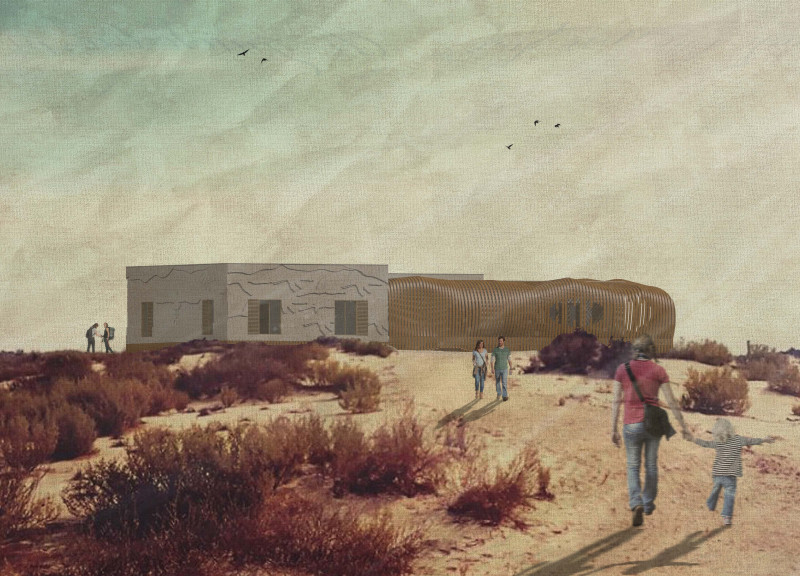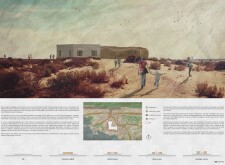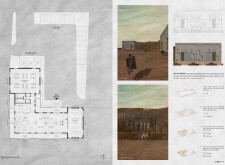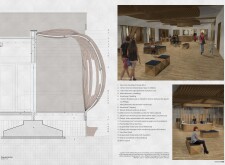5 key facts about this project
The Flamingo Visitor Centre is located in the Al Wathba Wetland Reserve, where it serves both as a visitor hub and an educational space. The design focuses on connecting people with the unique environment of the wetland. A sensitive approach to architecture drives the project, balancing the needs of visitors with the protection of the delicate habitat surrounding it.
Structural Efficiency
The building utilizes Structural Insulated Panels (SIPs) as its main construction method, which enhances structural efficiency. This choice results in a lightweight design, reducing any disruption to the site during building work. Made from a core of high-performance insulation between layers of Oriented Strand Board (OSB), the panels also provide energy efficiency. The simplicity of their assembly on-site allows for quicker construction without heavy machinery, facilitating a more streamlined process.
Environmental Integration
Large windows are strategically placed throughout the centre, allowing natural light to fill the interior while connecting visitors to the wetland outside. Manual ventilation louvres are integrated into the design to promote passive airflow, enhancing comfort within the building. These features are not just functional; they reflect a commitment to environmental responsibility and the aim of keeping the building in tune with its ecological setting.
Material and Aesthetic Connection
The exterior is primarily clad in limestone, which offers durability and relates to the local landscape. The limestone features CNC-milled patterns that mimic the natural forms found in the wetland’s ecosystem. This choice of materials not only supports the building's structural integrity but also enhances visual interest, giving it a character that resonates with its surroundings.
Visitor Experience
The design includes shaded terraces that provide sheltered areas for observing the wildlife and scenic views of the wetlands. These terraces help bridge the indoor spaces with the outdoor environment, ensuring that visitors can comfortably engage with nature. The thoughtful arrangement of these areas reflects a dedication to creating inviting spaces for learning and exploration.
Curved forms of the terraces resemble the gentle undulations of the desert landscape, offering protection from the sun while inviting guests to pause and appreciate the beauty of the wetland. Such details encourage a deeper connection to the natural world, highlighting the building's role as a place for both education and enjoyment.






















































